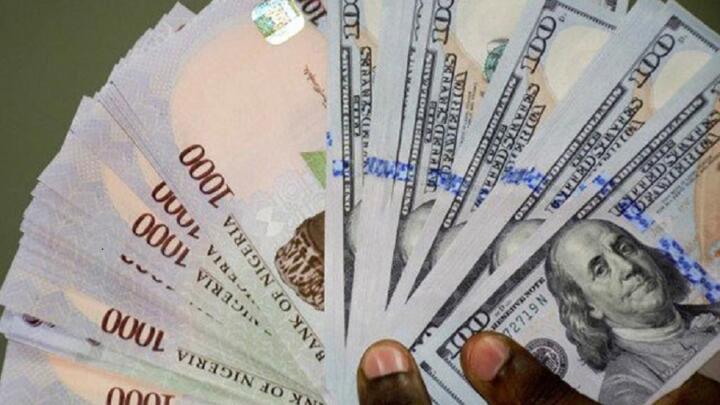The Naira concluded the week on a more positive note, trading at ₦1,534.72 to the U.S. dollar in the official market—a modest but meaningful improvement from the ₦1,550 average recorded earlier in the week. The currency’s uptick is being attributed to increased liquidity in the foreign exchange market, tighter regulatory oversight, and measured intervention by financial authorities.
Following weeks of sustained pressure stemming from thin dollar supply and persistent currency volatility, this upward movement brought renewed optimism to import-dependent businesses and households grappling with surging costs. It offers a momentary respite from the uncertainty that has gripped exchange rates, import pricing, and inflation forecasts in recent months.

Market analysts have pointed to a combination of factors supporting the shift. Reports suggest that foreign exchange inflows—particularly from export sales in agriculture and services sectors—rose slightly, improving availability of the U.S. dollar. Liquidity injections by the central bank, including limited dollar sales to key sectors at the official rate, have also helped ease some of the tension in the inter-bank market.
Meanwhile, remnants of parallel market rates still loom above official levels, with estimates placing weekend rates near ₦1,650 to ₦1,700 per dollar. Despite this gap, the narrowing divergence between listed and parallel rates is seen as a sign that speculative activity is cooling and that traders are aligning more closely with designated windows.
For businesses reliant on imported inputs, the easing of exchange rates could translate into lower cost pressures if sustained. Manufacturers, retailers, and logistics firms have cited currency volatility among their top concerns—as wide daily swings in the naira’s value have forced them to frequently adjust procurement budgets and hike product prices.
However, the modest appreciation comes with its own set of challenges. While importers benefit from a stronger official rate, exporters—particularly those exporting raw commodities or semi-processed goods—may see their gains constrained unless parallel and official rates converge more fully. Many exporters still report selling their foreign currency receipts into parallel markets to access higher exchange rates, limiting the effect of the official shift.
Policymakers face a delicate balancing act. Further interventions by the central bank carry inflationary risk and may erode the country’s foreign reserves if not timed carefully. Conversely, allowing naira depreciation to accelerate could exacerbate inflation and suppress consumer purchasing power further.
Observers argue that structural reforms—such as greater transparency in forex allocation, enhancements to export competitiveness, and improved access to diaspora remittances via formal channels—will be vital for sustaining currency stability in the medium term. Meanwhile, businesses await confirmation on clearer policies to guide forex access and pricing.
Financial institutions have welcomed the stability signal for now. Banks and foreign exchange operators have expressed relief that market participants are showing greater confidence in official channels. The improved performance may reduce over-reliance on informal corridors and discourage circular trading that weakens policy efficacy.
Local brokers and traders report that the reduction in volatility has led to a smoother trading environment, with fewer abrupt spikes in rates and smaller premiums commanding trades to off-market rates. This has also clarified pricing expectations for forward contracts and foreign currency derivatives, relieving pressure on hedging instruments.
Consumer sentiment remains cautious. Many households and small businesses continue to feel the effects of prior high exchange rates—especially as prices of imported food items, pharmaceuticals, and fuel remain elevated. Analysts stress that for any real consumer benefit, the enhanced rate needs to be sustained over several weeks, allowing businesses to pass savings down to customers without sacrificing margins.
Looking ahead to next week, traders expect the naira to hold within the ₦1,530–₦1,550 range if dollar supply remains steady. However, any large outflows—such as external debt payments or political disruptions—could quickly reverse the improvement. Seasonal demands like school fees, travel spending, or disbursements for agriculture imports may also influence dollar flow and exchange dynamics.
The central bank is keeping close tabs on parallel and black-market rates and is reportedly prepared to intervene if speculative runs threaten stability. Some policymakers advocate for further dollar windows or structured auctions to moderate the parallel market and reduce arbitrage opportunities, though implementation may take time.
In summary, the naira’s close at ₦1,534.72 represents a welcome easing in a challenging cycle of depreciation. While tentative, the shift reflects better dollar inflow, targeted intervention, and quieter trading patterns. For businesses, consumers, and policymakers alike, the test now lies in maintaining the trend rather than reverting to old volatility. Sustained supply, policy clarity, and gradual macroeconomic improvements will determine whether this recovery is a blip or the start of a broader stabilisation trajectory for the naira.
Support InfoStride News' Credible Journalism: Only credible journalism can guarantee a fair, accountable and transparent society, including democracy and government. It involves a lot of efforts and money. We need your support. Click here to Donate
